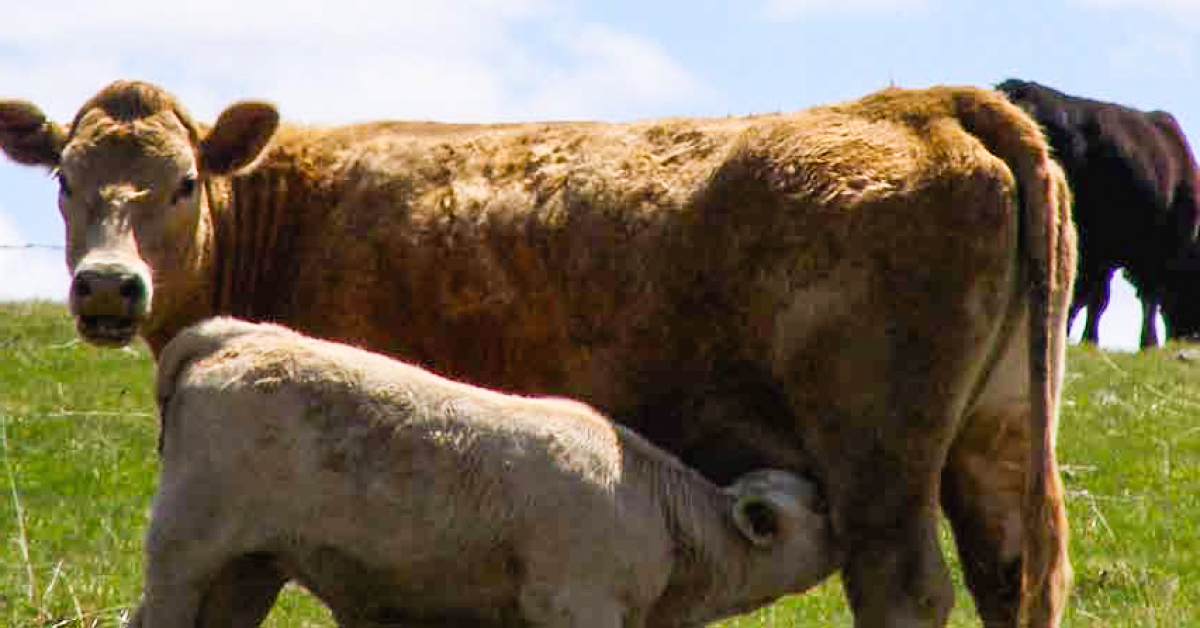
Changing weather conditions and stress while transporting calves opens the door for primary pathogens that cause summer pneumonia or Bovine Respiratory Syncytial Virus.
Do Your Calves Have Summer Pneumonia?
Summer pneumonia is a real challenge and can occur during dry or wet weather conditions. Young calves may not last long with summer pneumonia and can succumb to the disease quickly. Identifying sick calves isn’t difficult, but identifying them early in the disease process, when clinical signs can be most effectively addressed, becomes more challenging when the calves are turned out on pasture.
Signs of Summer Pneumonia in Cattle
Clinical signs for summer pneumonia can include droopy ears, sluggish demeanor, extended neck, rapid breathing and nasal discharge. Keeping a consistent, watchful eye on cattle offers the best chances for early detection and prevention.
Preventing Pneumonia in Calves
Vaccination programs, combined with sound herd management, are key. By ingesting colostrum, calves absorb maternal antibodies that initiate a strong immune system early in life. However, this immunity quickly deteriorates as the calf gets older, making vaccinations even more vital. Vaccines train the calf’s immune system to recognize and fight the viruses and bacteria it encounters later in life.
Vaccinating young calves in the springtime before putting them out for summer will help you and the calf win the fight against summer pneumonia. It’s like sending the calves' immune system to school.
Trusted Pneumonia Vaccines for Your Cattle
A great way to provide your calves a strong start is through an initial vaccine series with trusted products. INFORCETM 3 is the most utilized respiratory vaccine on the market and the only vaccine that can prevent respiratory disease caused by BRSV and aid in the prevention of viruses.
By adding ONE SHOT BVD® to the initial vaccination series, producers provide their calves a rapid, balanced immune response against all of the important bovine respiratory disease pathogens. A fall booster to this initial series provides uncompromised protection and a long duration of immunity.
Recognize the Risk
Anything abnormal to the animal’s environment or daily activity can be a stress factor and young calves’ immune systems must compensate for it. When calves are taken out of their normal comfort zone, keep an eye on them for at least the next seven to 10 days to make sure sickness doesn’t follow the associated stress.
Tips to Reduce Summer Pneumonia Risk
-
While all calves are at risk, calves born to heifers and young cows have the highest risk of summer pneumonia
-
When working cows, handle calves with care to avoid unnecessary stress
-
Observe calves frequently to detect sickness in its earliest stages
-
Be mindful of extreme heat and dust when working, driving or transporting cattle
-
Administer respiratory vaccines before pasture turnout
To learn more about giving calves a healthy start, visit www.completecalfprotection.com or contact an IFA feed & nutrition advisor.
Discover IFA Feed & Nutrition Services
Written by Dr. Jon Seeger and originally published in the IFA Cooperator magazine (vol. 83, no. 1) Spring 2017. Jon is the IFA Managing Veterinarian with Zoetis.

